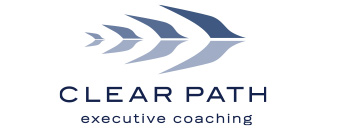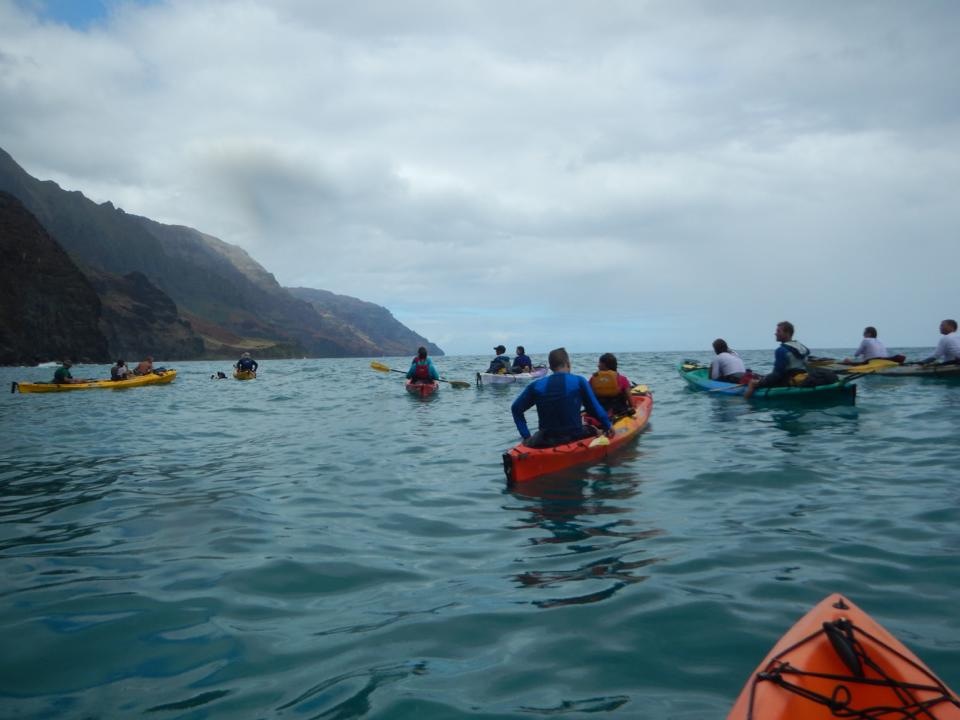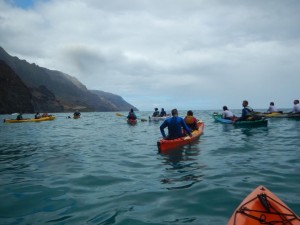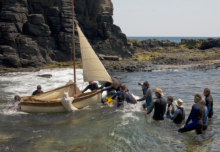I’ve had Hawaii on my mind since returning from an unforgettable vacation in Kauai last month. The chill shaka vibe was a welcome tonic for our 16-person crew of harried urban refugees, and the breathtaking natural beauty that surrounded us at every turn never got old.
My most memorable experience was the 17-mile open ocean kayak expedition a few of us took down the legendary Na Pali coast.
Paddling past the towering volcanic cliffs, pristine turquoise caves, cascading waterfalls and lush green valleys that were considered sacred ground by Hawaii’s original Polynesian settlers, I couldn’t stop thinking about the strength and tenacity that the South Pacific mariners who were skillful (and lucky) enough to complete the 2,000 mile journey there must have possessed.
That made me curious about what prompted those early voyagers from the Marquesas Islands and Tahiti to set off on a dangerous journey of unknown duration in their small, crowded canoes in the first place. Theories abound, but the explanation that makes the most sense to me is that they did it for the pure challenge of it – because the drive to explore is part of what makes us human. Have canoe, will travel. I get it.
Without any instruments in the equation, though, the how part was harder to fathom. I understand the concept of celestial navigation, but eventually the sun comes up – and then what? The answer, I learned, is a navigation process developed by the ancient Polynesians called wayfinding. It’s based on a mental map of the elements called a star compass that establishes a detailed taxonomy for finding direction based on continuous observations of the location of the night stars, the behavior and flight patterns of birds and the look and feel of the waves.
If you’re interested in learning more, this fascinating description, written by a contemporary Hawaiian wayfinder, is the best I’ve read. His account suggests that the most expert wayfinders are those who draw on both their accumulated knowledge, observational acumen and navigational skills as well as their gut intuition acquired from experience and trial-and-error learning. Sound familiar?
The truth is that we all are, and always have been, wayfinders of one kind or another, regardless of our specific circumstances or surroundings. I believe the ability to read, interpret and respond intelligently to our environment is in our DNA. So it should come as no surprise that many of the same strategies that allowed our ancestors to survive long stretches of uncertainty, ambiguity and volatility are as relevant today as they were then.
With that in mind, here are some questions for you to consider as you think about your own journey:
- What does being “on course” mean to you? By that definition, are you heading in the right direction, or has your ideal destination changed since you initially set out?
- As your position and / or course changes, are you modifying your priorities and the external data you gather accordingly? What clues and skills were more or less important when you were first starting out, and what should you be thinking about doing differently now?
- Are you putting too much emphasis on either your observational intelligence or your gut instincts at the expense of the other? What would a healthy recalibration look like?
- Do you have the right people in your boat with you for the next leg of your journey?
- An accomplished wayfarer told his protégée, “If you can read the ocean, you will never be lost.” What is your touchstone?
Let me know – I’d love to hear from you!










